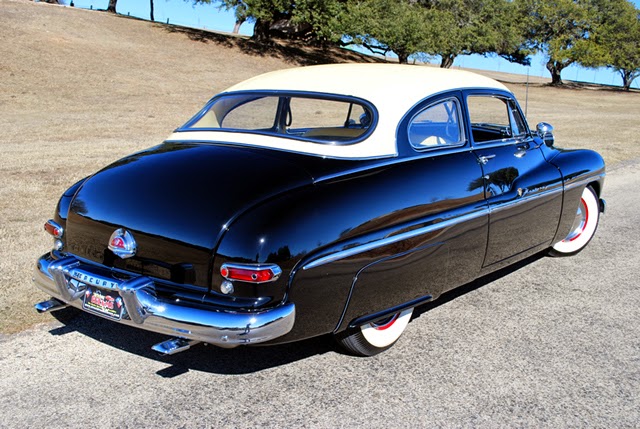The W186 styling is an interesting combination of old and contemporary features. The oldest is the traditional vertical grille theme. Also looking somewhat dated for a car appearing in showrooms early in 1952 was the fender treatment. Front fenders that fade into the front doors date at least as far back as the pre-war 1941 Packard Clipper. A somewhat similar bustleback trunk and separate rear fenders combination appeared on 1948 Oldsmobiles. The most modern feature was the one-piece windshield that also was found on 1950 Cadillacs.
Whereas prewar Mercedes sedans were rather squared-off with fairly flat sides, the new W186s were noticeably more rounded. This had the effect of making them look bulky, but perhaps that was thought desirable for top-of-the-line cars in those days.
All told, the W186 featured dated styling features awkwardly assembled. Later on, styling would improve.
1951-57 Mercedes-Benz 300 W186 - front 3/4 view
1951-57 Mercedes-Benz 300 W186 - rear 3/4 view
1951-57 Mercedes-Benz 300 W186 Cabriolet
1951-57 Mercedes-Benz 300 W186 - Hans Liska ad illustration
1951-57 Mercedes-Benz 300 W186 - Hans Liska ad illustration
As a bonus feature, I include these advertisement illustrations for the W186 by noted artist Hans Liska, who I wrote about here.












































